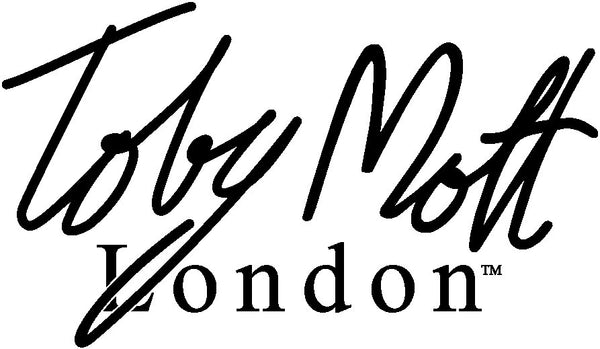I ♥ [Your Choice Here]
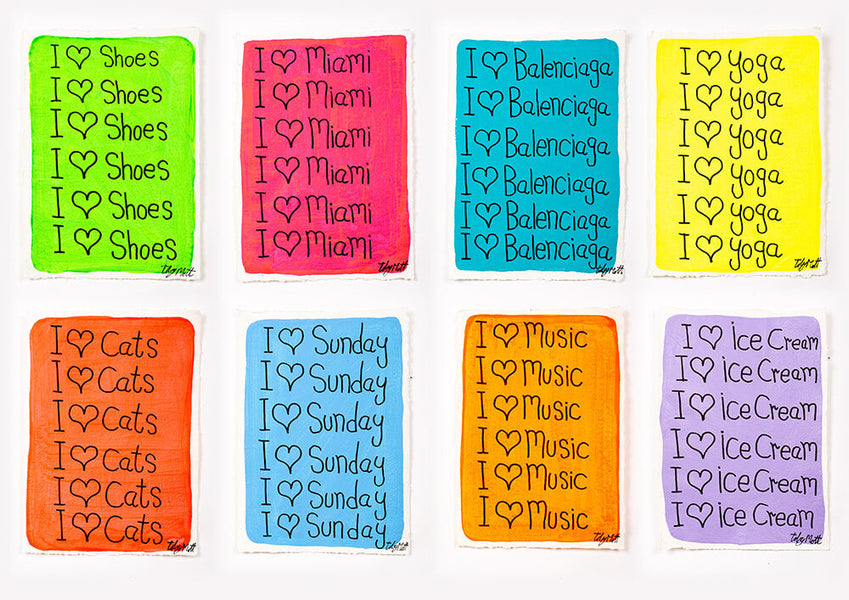
Celebrate your love with a pop sensibility in Toby’s distinctive school detention lines drawing on brightly painted paper.
Following on from the successful launch of his I Love My Neighbourhood series this summer in Notting Hill, London, Toby has received many additional requests. Not just for other neighbourhoods and places around the world from New York City to The Bahamas, but also for the names of pets, lovers and even ice cream..!!
So now he’s accepting commissions on any of eight brightly painted colour options in three sizes.
Artwork will be hand drawn in black ink on painted, handmade, Indian Khadi cotton rag paper.
All commissions welcome with framing options available

The Escape Project by Toby Mott
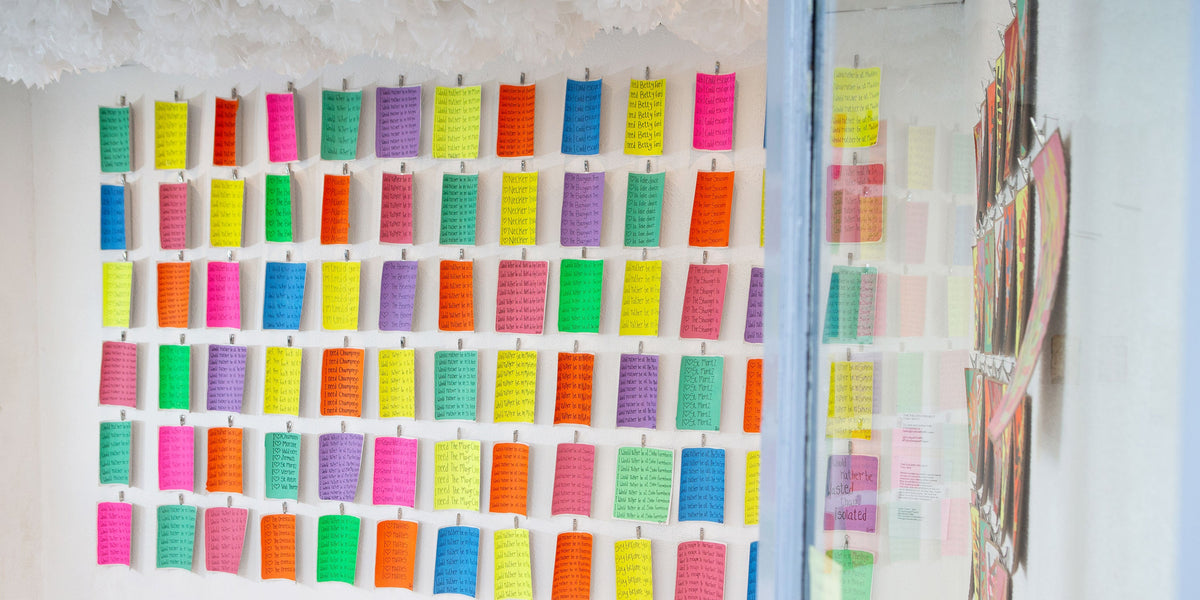
Whilst wondering where I would like to escape to during the first Covid lockdown and asking others where they too would like to escape, this drawing project was born.
The plan was an exhibition in the run up to Christmas but as they say, 'make plans and God laughs’. So now the show is open at my London studio and here at TobyShop.
-
 Sold out
Sold outI'd rather be in the 1980s
Regular price £75.00 GBPRegular priceUnit price / per -
 Sold out
Sold outI ♥️ Chamonix
Regular price £75.00 GBPRegular priceUnit price / per -
We are open
Regular price £75.00 GBPRegular priceUnit price / per -
I'd rather be anywhere f*cking else
Regular price £75.00 GBPRegular priceUnit price / per -
I need a retreat
Regular price £75.00 GBPRegular priceUnit price / per -
I want to be at the pub
Regular price £75.00 GBPRegular priceUnit price / per
The Love Series by Toby Mott
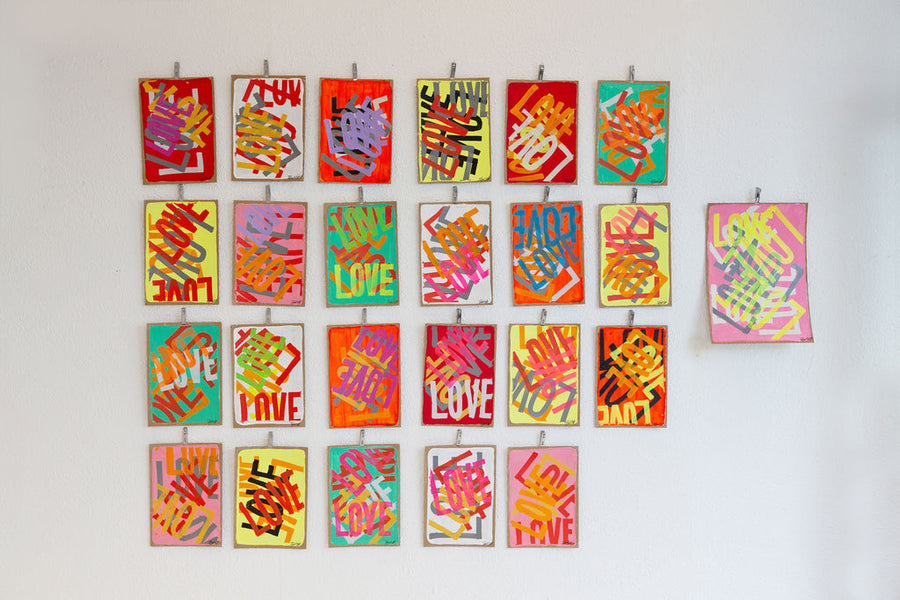
My intention, with these ink on paper works, is to encourage consideration of the many manifestations of Love, by using the form of the word Love as a repeated motif, multi layered and at conflicting angles. The result is dynamic full of colour and energy — Like Love itself.
-
 Sold out
Sold outLove Series No. 155
Regular price £150.00 GBPRegular priceUnit price / per -
 Sold out
Sold outLove Series No. 160
Regular price £150.00 GBPRegular priceUnit price / per -
 Sold out
Sold outLove Series No. 137
Regular price £150.00 GBPRegular priceUnit price / per -
Love Series Painting
Regular price £350.00 GBPRegular priceUnit price / per -
Love Series No. 156
Regular price £150.00 GBPRegular priceUnit price / per -
Love Series No. 152
Regular price £150.00 GBPRegular priceUnit price / per
New Luxury Punk by Toby Mott
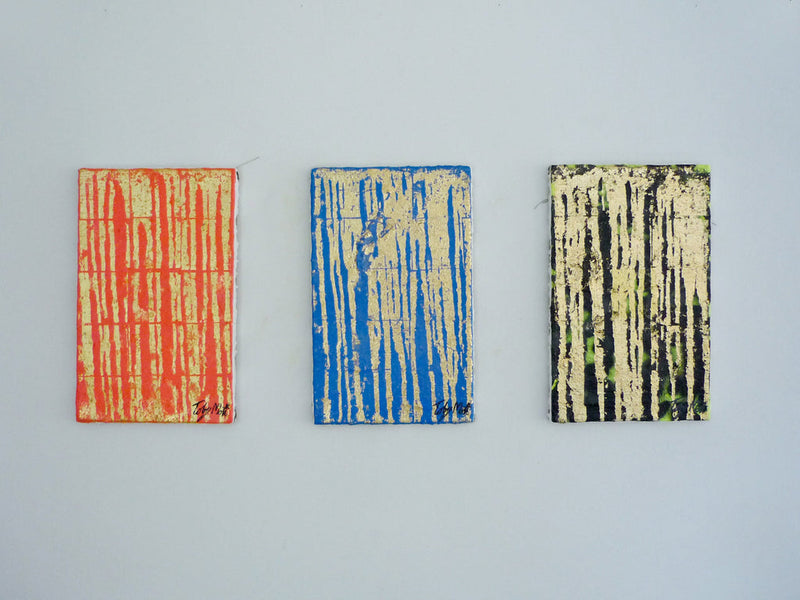
Toby Mott’s paintings – not dissimilar to religious icons – combine a debased, trash-punk aesthetic with the status symbols of the high fine arts. Mott uses superlative materials, such as real gold and silver, in combination with some subverted craft skills and lots of art historical awareness, all signed off with the authenticity of the artist’s signature. Although, on close inspection, we see that Mott’s signature is not hand written, but crudely stencilled . . .
In some ways, this is analogous with punk itself. Punk started off as a form of rebellious individuation, only to became totally co-opted into the wealthy establishment, as seen in the chorus of retrospective approval given it by politicians and other unlikely fans, on its fortieth birthday in 2016. Mott has appropriated this process, left out the boring forty years, and gone straight for a fabulous, status aware, wealthily successful, but compromised look. At its centre, as well as fun and mad beauty, Mott offers a mismatch (slippage, as art critics would say), between the capitalistic value status of his works, and their origins in disorder and rebellious imperfection – as seen in their lumpy edges, parodic signature, and fluorescent underpainting. Either that, or it’s a Tutankhamun’s tomb, in which the imperial explorer Mott enters to despoil it of all the treasures of a punk dynastic kingdom.
Value meaning in the contemporary art world is beyond parody, and its excesses of wealth and ostentation make it the Babylon of all Babylons. Mott engages in this process, in a subversive alchemy, turning base materials into gold – or vice versa. As a teenager he was a punk, since when he has started a number of successful businesses, often with a punk or handmade aesthetic. Most significantly, perhaps, he is a distinguished collector of punk ephemera 1, on which he is an authority, as manifested in exhibitions he curates, books he publishes, and events and talks he organises. All this qualifies him an entitlement to make work about punk, money, appearance, value, and the market, and to accord quivering value to the wealth objects he creates. Mott works in a tradition that includes Koons and Manzoni, with a bit of Beuys, but which is most indebted, perhaps, to Warhol, that master of all masters, in whose workshop of ideas Mott is a willing and respectful pupil.
Mott’s works, grungy lumps and all, are largely traditional in making. He oil gilds them, laying genuine gold leaf or other rare materials onto the gesso he laboriously applies. The underpainting may sometimes, in a break with tradition, involve the use of an incongruous, wildly fluorescent paint. Recognisable punk signifiers, such as razor blades and safety pins may be embedded in the surfaces. The surfaces are highly reflective – theoretical mirrors of our vanity, especially given that the titles of the works relate to other luxury products like perfumes, which have associations with self-conscious sexuality and allure.
Mott explores the branches of the tree of artistic knowledge – or, more properly, swings amongst their graffitied, punk-stickered branches – to pluck some very fruitful ideas, and then bring them to an absurdly gilded brightness. If you are intelligent, beautiful, and wealthy enough, you too can shop at the glittering cornucopia of wealth objects that shower from Mott’s version of capitalism; an ecstatic shopping experience for you and the rich, sexy punks in your life.
-
Candy No.1
Regular price £1,500.00 GBPRegular priceUnit price / per -
Candy No.2
Regular price £1,500.00 GBPRegular priceUnit price / per -
Candy No.3
Regular price £1,500.00 GBPRegular priceUnit price / per -
Candy No.4
Regular price £1,500.00 GBPRegular priceUnit price / per -
Crystal Noir No.1
Regular price £2,000.00 GBPRegular priceUnit price / per -
Crystal Noir No.10
Regular price £2,000.00 GBPRegular priceUnit price / per
Framing
Toby Mott studio offers a framing service for all our art works. Our frames are double tray box frames.
An elegant, minimalist frame enhancing the artwork without detracting from it; simplicity at its best.
They are manufactured from 3mm cast perspex acrylic.
Comprised of two acrylic trays, one inverted into the opening of the other, creating a rigid structure and safely storing the artwork between the two with an air gap, affixed to each other with discreet fixings.
We offer a variety of sizes, and also a bespoke service to make frames of any size to house multiple drawings.
Here are some examples of our frames:
-
Custom Frame
Regular price £175.00 GBPRegular priceUnit price / per
